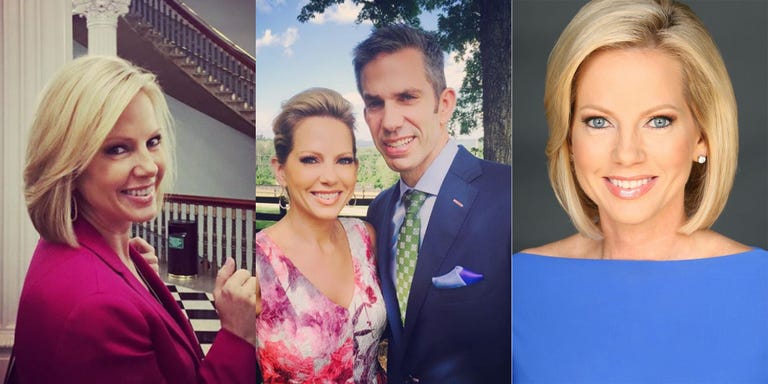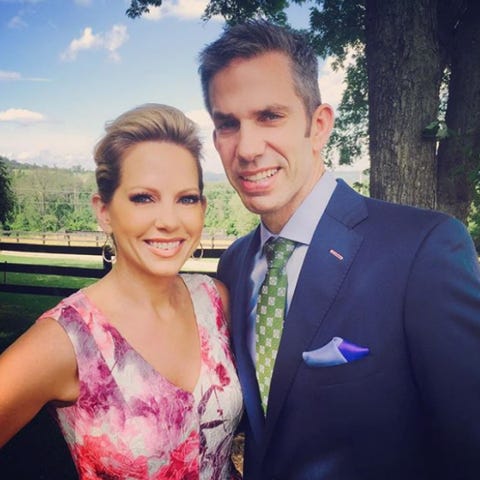
“You know what I think? You’re very emotional.”
Those were the words of a specialist I’d sought out months into an agonizing battle with chronic pain—and no answers. I’d driven nearly an hour to get to him for multiple appointments, but that day, I vowed I’d never go back. It was all I could do to get to my car before I burst into tears.
‘Searing Pain In One Eye’
Let’s backtrack a bit: My chronic pain began months earlier, in February of 2010 when, one night, I was jolted awake with searing pain in one eye—It felt as if someone was slashing my eyeball with a hot poker.
I stumbled through the darkness, into my bathroom in search of eye drops, which I thought would dull the pain. No such luck—the pain lingered for hours and soon it was time for me to get up and head to work.
It was an odd experience, and one I couldn’t explain. I gladly put it behind me until days later, when it happened again. Hunched over in agony, I prayed for relief. It didn’t come quickly. I made an appointment with my optometrist the minute his office opened.
After a thorough examination, he warned I was heading into a period in my life (I was 39 at the time—just another perk of getting older) when dry eyes were likely to be a problem for me. That, combined with decades of wearing contact lenses, meant I’d need to find ways to rest my eyes.

Courtesy of Shannon Bream
He couldn’t explain the intense pain, but he acknowledged that I was suffering during those episodes. When it happened again, he counseled me to look for a specialist.
As I searched for someone who would be able to treat me, the eye pain got worse, showing up more and more often at night, but not as much during the day.
I started wearing my contacts overnight—something ophthalmologists vehemently warn against—because, oddly enough, I didn’t get the nighttime attacks when I wore them.
“I was desperate for sleep, but I knew there was a good chance I’d wake up in excruciating pain.”
I explained these unusual symptoms to the highly recommended specialist I’d found—the same one I referenced earlier—and he didn’t offer me much of a diagnosis. Instead, he made a couple of suggestions to lessen the pain and asked me to come back after some time had passed.
Losing All Hope For Answers
Before that next visit, things worsened significantly. I began experiencing pain nearly all the time, often with double-vision.
With the worsening pain also came exhaustion. I was desperate for sleep, but I also knew there was a good chance I’d likely wake up in excruciating pain. Every day simply became about survival.
Only my husband had any clue what I was living through. I tried to hide it from my co-workers, family, and friends because I literally didn’t have the words to explain what my life had become. Without a diagnosis, I felt no hope of finding a cure—or method to cope.
I laid out my daily struggle when I returned to the specialist, only to have him brush aside my concerns and diagnose me as “emotional.”
Damn right I was—chronic pain can do that do a person.
His words spun me into a months-long spiral into a very dark place I wasn’t sure I’d ever escape from. For a long time after that appointment, I gave up hope that I’d find a doctor who could help.
” I couldn’t imagine living another 40 years in endless pain and debilitating fatigue.”
Instead, I took to the Internet; I searched web sites, chat rooms, medical journals—anything that might hold a clue.
I began to find others with similar symptoms. As they talked about being turned away from emergency rooms and doctors’ offices, I felt I’d found my tribe. These people understood. They also talked about the only thing that felt hopeful: ending their pain by ending their lives.
I totally got it. There were many times I couldn’t imagine living another 40 years in endless pain and debilitating fatigue. Sometimes, I couldn’t see my way through the next 40 seconds. The only thing that kept me going was thinking about how my family and friends would cope if I left them behind.

When I told my husband how I was feeling, he took it in without judgment. He vowed we’d spend every penny we had and search the world until we found a doctor who took my situation seriously and we had a concrete diagnosis. This happened on a Sunday, so I told myself, “Make it to Monday morning, and we’ll start working the phones.”
After Two Years Of Misery, A Diagnosis
The next day, I started scouring the web for physician qualifications and reviews again, and I found a Thomas Clinch, M.D., an ophthalmologist and world-class cornea specialist in Washington, D.C., where I live.
Patient reviews noted his comprehensive treatment and attentive manner. But still, before calling, I coached myself, “Keep it together. You don’t want them to think you’re crazy.”
The receptionist listened carefully and asked if she could place me on hold. She returned to tell me she had a cancellation for the next day. For what I hoped would be the last time, I told myself, “Just make it through one more night.”
I arrived at my appointment riddled with anxiety but was quickly put at ease by the assistant who did my initial assessment. When the doctor finally arrived, having reviewed my file, he said something I never thought I’d hear: “I know what you have.” It was all I could do not to break down crying.
“The surface of my eye was actually adhering to my eyelid.”
After examining my eyes for himself, he stood by his diagnosis: epithelial basement membrane dystrophy and recurrent corneal erosions.
Basically, I suffer from a genetic condition that causes my corneas to tear all the time. If it’s happened to you even once, you know how agonizing it can be—for me, it was happening on a daily basis.
The surface cells on my eyes don’t root back into my eyeball like a normal person’s do. Instead, they want to pull off. At night, the surface of my eye was actually adhering to my eyelid. Once that happened, any movement would cause a tear and trigger nearly indescribable pain.
Clinch threw me my first lifeline nearly two years into this difficult journey, one I truly wouldn’t wish on my worst enemy. He talked about the levels of treatment options we could explore and then dropped a bomb I wasn’t expecting. “You should know,” he said softly, “there’s no cure.”
I didn’t hear anything else he said that day, but I did go back; and what I missed was important: There are ways to manage the condition, like therapeutic contact lenses or topical antibiotic eyedrops.
Finally, Learning To Manage My Condition
For years, Clinch and I have worked as teammates to find solutions and work through the rough patches. He has listened, advised, and nudged me to try new ways to work around the fact that there’s no cure.

Courtesy of Shannon Bream
In the fall of 2017, I had a surgery that can be described as the closest thing to a cure without actually being one. The recovery was complicated, painful, and slow, but I’m on the other side now.
My eyes will never be perfect and totally pain-free, but thanks to a caring physician who met me halfway in a very difficult time, I feel the best I’ve felt in years.
Instead of just surviving life and hoping to make it through one more day, I live my life with joy now, and I’m incredibly grateful.
I’ve also learned a lot—but one thing sticks out the most: You must be your own fiercest advocate when it comes to your health. Walk away from medical professionals who dismiss your concerns, and don’t quit searching until you find someone who will truly partner with you to find the answers you deserve.
Shannon Bream is anchor of FOX News @ Night with Shannon Bream (weeknights at 11PM/ET). Follow her on Twitter @ShannonBream.
Source: Read Full Article
